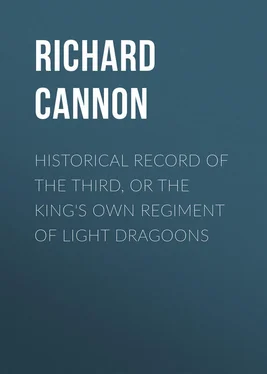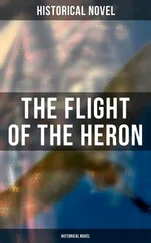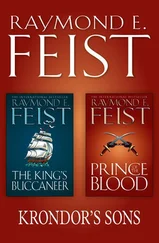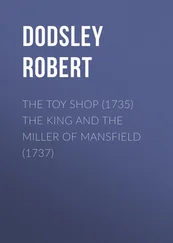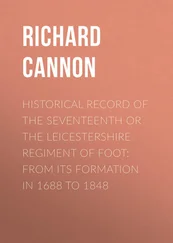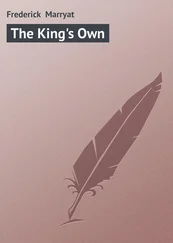Richard Cannon - Historical Record of the Third, Or the King's Own Regiment of Light Dragoons
Здесь есть возможность читать онлайн «Richard Cannon - Historical Record of the Third, Or the King's Own Regiment of Light Dragoons» — ознакомительный отрывок электронной книги совершенно бесплатно, а после прочтения отрывка купить полную версию. В некоторых случаях можно слушать аудио, скачать через торрент в формате fb2 и присутствует краткое содержание. Издательство: Иностранный паблик, Жанр: foreign_antique, foreign_prose, на английском языке. Описание произведения, (предисловие) а так же отзывы посетителей доступны на портале библиотеки ЛибКат.
- Название:Historical Record of the Third, Or the King's Own Regiment of Light Dragoons
- Автор:
- Издательство:Иностранный паблик
- Жанр:
- Год:неизвестен
- ISBN:нет данных
- Рейтинг книги:3 / 5. Голосов: 1
-
Избранное:Добавить в избранное
- Отзывы:
-
Ваша оценка:
- 60
- 1
- 2
- 3
- 4
- 5
Historical Record of the Third, Or the King's Own Regiment of Light Dragoons: краткое содержание, описание и аннотация
Предлагаем к чтению аннотацию, описание, краткое содержание или предисловие (зависит от того, что написал сам автор книги «Historical Record of the Third, Or the King's Own Regiment of Light Dragoons»). Если вы не нашли необходимую информацию о книге — напишите в комментариях, мы постараемся отыскать её.
Historical Record of the Third, Or the King's Own Regiment of Light Dragoons — читать онлайн ознакомительный отрывок
Ниже представлен текст книги, разбитый по страницам. Система сохранения места последней прочитанной страницы, позволяет с удобством читать онлайн бесплатно книгу «Historical Record of the Third, Or the King's Own Regiment of Light Dragoons», без необходимости каждый раз заново искать на чём Вы остановились. Поставьте закладку, и сможете в любой момент перейти на страницу, на которой закончили чтение.
Интервал:
Закладка:
Since the Regiments of Horse were formed into Dragoon Guards, additional improvements have been introduced into the constitution of the several corps; and the superior description of horses now bred in the United Kingdom, enables the commanding officers to remount their regiments with such excellent horses, that, whilst sufficient weight has been retained for a powerful charge in line, a lightness has been acquired, which renders them available for every description of service incident to modern warfare.
The orderly conduct of these Regiments in quarters has gained the confidence and esteem of the respectable inhabitants of the various parts of the United Kingdom in which they have been stationed; their promptitude and alacrity in attending to the requisitions of the magistrates in periods of excitement, and the temper, patience, and forbearance which they have evinced when subjected to great provocation, insult, and violence from the misguided populace, prove the value of these troops to the Crown, and to the Government of the country, and justify the reliance which is reposed on them.
ON THE INSTITUTION OF LIGHT CAVALRY IN THE BRITISH ARMY
The records of the military events of the remote ages speak of heavy-armed horsemen being accompanied by others mounted and equipped for light services. The Barons and Knights, who rode the powerful horses celebrated by historians, and took the field completely cased in steel, had a few light-armed attendants; the feudal horsemen were variously armed; and the practice of employing Light, as well as Heavy Cavalry, was adopted, to a limited extent, by several commanders of antiquity. Armour, proof against arrow, lance, and sword, and men and horses of colossal appearance, in whom the greatest amount of weight and physical power, consistent with a moderate share of activity, could be combined, were however held in the highest estimation; but eventually the great advantage of having a portion of Cavalry in which lightness, activity, and celerity of movement, might form the principal characteristics, was discovered. The introduction of fire-arms occasioned armour to be gradually laid aside, or limited to a few heavy horsemen; superiority of weight was no longer thought so necessary; and in the seventeenth and eighteenth centuries the use of Light Cavalry became more general than formerly.
During the seventy years' war between Spain and the United Provinces of the Netherlands, Prince Maurice of Nassau (afterwards Prince of Orange) selected a few English and Dutch heavy-armed Lancers, and constituted them Carabineers , for skirmishing, and other services of a similar character. The Emperor of Germany formed regiments of Hungarian Hussars , who were light men on small horses. The Carabineers were of an intermediate class, being much heavier than the Hussars, and lighter than the English Lancers and Cuirassiers, who rode powerful horses, and wore armour on the head, body, and limbs. The French monarchs adopted the practice of having a few Carabineers in each troop of Horse; and, in 1690, Louis XIV. added a troop of Carabineers to each Regiment of Cavalry. During the campaign of 1691, these troops formed a Carabineer brigade; but their motley appearance, and the defects of the plan, occasioned them to be constituted a regiment of Carabineers, and clothed in blue. In 1693 the French King added a regiment of Hussars to the Cavalry of his army. 7 7 Histoire de la Milice Françoise , par le Père Daniel.
In England the same principle was partially carried out; the heavy horse laid aside their armour, excepting cuirasses; they were mounted on horses of less weight than formerly, and they were supplied with carbines by King Charles II. In 1685, King James II. raised several independent troops of Light Horse , and one of them (Sir Thomas Burton's) was retained in his service until the Revolution in 1688, when it was disbanded. In 1691-2 King William III. constituted the Seventh Regiment of Horse, now Sixth Dragoon Guards, a corps of Carabineers, as an honorary distinction, and for the performance of services for which the other regiments of Horse, being Cuirassiers, were not well adapted. The object was to combine with strength and power a greater degree of activity and speed than was to be found in the Cavalry at that period; and His Majesty appears to have contemplated having several corps of this description in his service, as he designated this the First Regiment of Carabineers ; but no second regiment was formed. 8 8 National Records.
In 1694 a troop of foreign Hussars formed part of the Army commanded by King William in Flanders. 9 9 The equipment of Hussars at this period is described by D'Auvergne, in his History of the Campaign of 1694 , pp. 22, 23.
During the wars of Queen Anne the Regiment of Carabineers was again supplied with cuirasses, and was mounted on the same description of horses as the other regiments; retaining, however, the title of Carabineers. The activity, size, weight, and strength of the horses ridden by the British Cuirassiers and Heavy Dragoons, with the bravery and muscular powers of the men, established their superiority in continental warfare over the Cavalry of other nations; they acquired great celebrity in the valley of the Danube and on the plains of the Netherlands, in the early part of the eighteenth century, under the renowned John Duke of Marlborough; and after the peace of Utrecht, in 1713, the reputation of the British Horse and Dragoons was so high that no alteration was thought necessary, and many years elapsed without any attempt being made to revive the practice of having either Carabineers, or Light Horse, in the British Army.
The great utility of the Light Cavalry of the continental armies had, in the mean time, become apparent. Improvements in military tactics, and in the arming and equipment of corps, were taking place in various countries; and a spirit of emulation extending itself to Great Britain, on the breaking out of the rebellion in 1745, his Grace the Duke of Montague evinced his loyalty and public spirit by raising a Regiment of Carabineers for the service of King George II.; at the same time, his Grace the Duke of Kingston, with equal zeal and generosity, raised, at his own expense, a Regiment of Light Horse . The latter regiment approximated, in the lightness of the men, horses, and equipment, to the Hussars of the continental armies; the Duke of Montague's Carabineers were of a heavier description of Cavalry.
At this period the old Cavalry Regiments rode black horses (excepting the Scots Greys) with docked tails; but the Duke of Kingston's Regiment was mounted on light horses of various colours, with swish or nag tails. The accoutrements were as light as possible: the men carried short carbines slung to their sides by a moveable swivel, pistols, and light swords inclined to a curve.
The usefulness of the Duke of Kingston's Regiment of Light Horse was proved in Scotland, where it served under His Royal Highness the Duke of Cumberland, and was found qualified for every description of service; the light horses traversing hilly grounds with facility. It distinguished itself on several occasions, particularly at the battle of Culloden, on the 16th of April, 1746, when it charged the clans with signal gallantry, and evinced great spirit and activity in the pursuit of the rebel army upwards of three miles from the field of battle. The Duke of Cumberland was highly pleased with its behaviour during the period it was under his command; and the conduct of the Light Horse throughout the contest reflected credit on the noble peer who had raised them.
The rebellion being suppressed, the regiment was, in consequence of the conditions on which the men had enlisted, directed to be disbanded; but the Duke of Cumberland so highly approved of its conduct that he obtained permission to embody as many of the men as would re-enlist, as his own Regiment of Light Dragoons.
Читать дальшеИнтервал:
Закладка:
Похожие книги на «Historical Record of the Third, Or the King's Own Regiment of Light Dragoons»
Представляем Вашему вниманию похожие книги на «Historical Record of the Third, Or the King's Own Regiment of Light Dragoons» списком для выбора. Мы отобрали схожую по названию и смыслу литературу в надежде предоставить читателям больше вариантов отыскать новые, интересные, ещё непрочитанные произведения.
Обсуждение, отзывы о книге «Historical Record of the Third, Or the King's Own Regiment of Light Dragoons» и просто собственные мнения читателей. Оставьте ваши комментарии, напишите, что Вы думаете о произведении, его смысле или главных героях. Укажите что конкретно понравилось, а что нет, и почему Вы так считаете.
